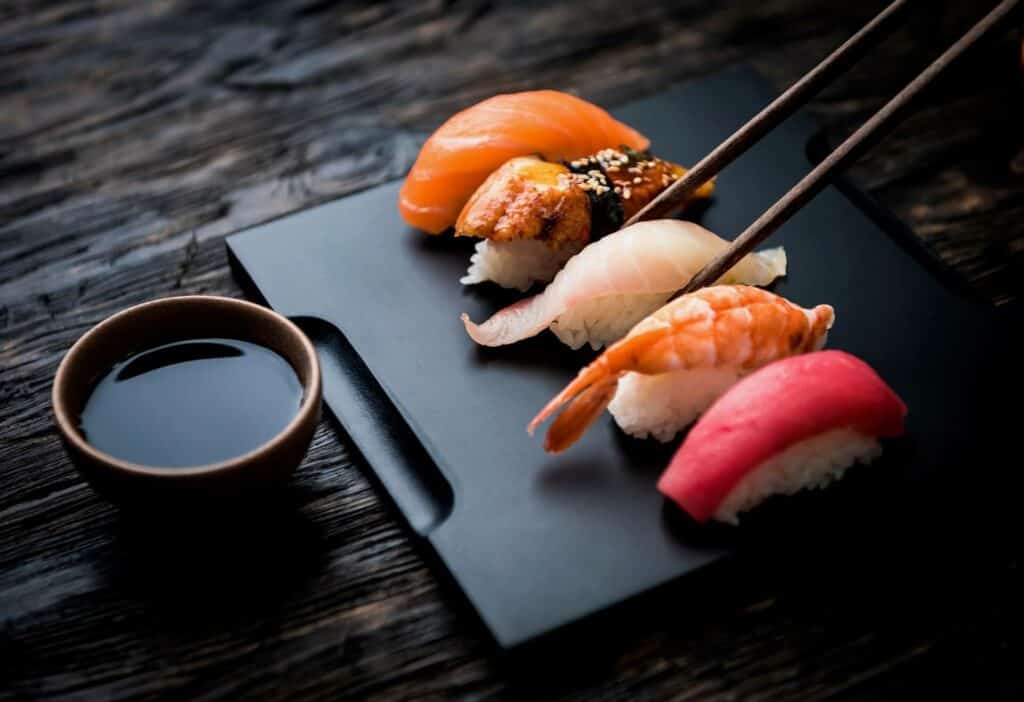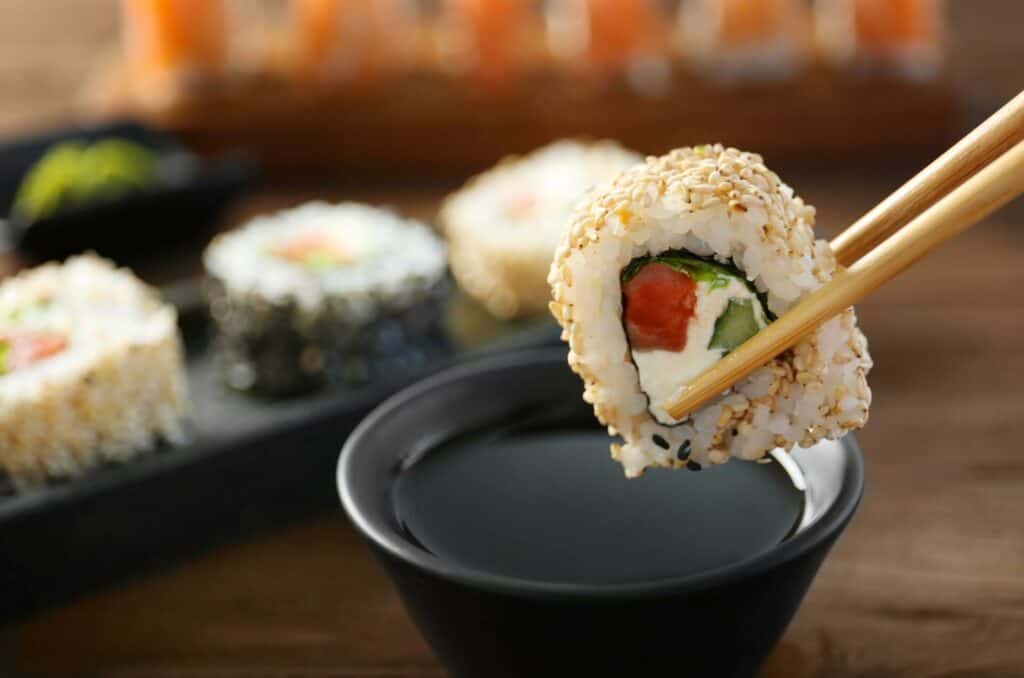If you’re a fan of sushi, you must’ve come across a few sushi sauce recipes. But have you wondered – what is sushi sauce and what should it be made out of? If you’re curious to find out more about this key element of Japanese cuisine, keep reading. I’ve explained everything about sushi sauce and its use in the text below.
Sushi sauce is a sauce you dip your sushi rolls in. There isn’t just one particular sauce recipe that can be used for all kinds of sushi. The most popular option is soy sauce, but there are countless other sauces available – from sweet and savory to spicy sushi sauce.


Whether you plan to make your own sushi at home or just want to get familiar with the many recipes out there to know what to order in a restaurant, my article will come in handy. I have explained everything about the delicious sushi soy sauce and additional options you can add to make your meal absolutely perfect.
What Is Sushi Sauce and How Does It Improve Your Sushi Experience?
When we mention sushi sauce, the first thing that comes to mind is the basic soy sauce – and this indeed is one of the most common sauces people eat with their sushi rolls. However, I wouldn’t limit myself to just one sauce.
Sushi sauce can be a lot of things – there are many amazing recipes out there, and I hope you will have the chance to try out as many as possible. That way, you’ll be able to find the perfect one for you. In this article, I will talk about soy sauce but also mention some of my favorite sushi sauces apart from the most common one.
How Do You Eat Sushi Sauce?
When you sit down at the table with a lot of sushi rolls in front of you, make sure you enjoy them fully. Sushi sauce is the key element that can either make or break your experience. What do I mean by that? Well, the point is to know how to use the sauce to get the most flavor out of your sushi. If you add more (or less) sauce than you’re supposed to, you will disturb the delicate balance of flavors in the roll.
So, how are you supposed to eat sushi sauce? The most important thing is not to overdip your rolls. Let’s say you want to dab a nigiri roll in soy sauce. According to the experts, you’re supposed to dip it on the side where the fish is, not rice. This way, you’ll make sure the roll doesn’t absorb too much sauce. If you dip it on the side of the rice, it will soak more sauce than you need and ultimately destroy the roll.

Soy Sauce, the Most Popular Sushi Sauce Out There
Soy sauce was developed in China over 2,000 years ago. Originally, it was used to keep food from spoiling and add more flavor. In Japan, it’s been in use since the 7th century. Traditionally, it’s made with soybeans, salt, wheat, and a fermenting agent (fungal spores). Although there are many types of soy sauce, the one commonly used for sushi and sashimi is double-fermented soy sauce called saishikomi-shoyu (shoyu is another name for soy sauce).
You can find a lot of manufacturers of soya sauce in your local supermarket, but if I were to suggest the best one, I’d say you should go for Kikkoman Soy Sauce. It’s one of the most popular soy sauces in the United States, and for a good reason. Kikkoman is one of the most famous Japanese companies specializing in sauces (among other food). I often try new products with my sushi rolls, and occasionally find something I like, but regardless – I always go back to Kikkoman.
Is Soy Sauce Healthy?
Considering that we’re supposed to use it in small doses, it doesn’t have that many beneficial effects on our health. But it also doesn’t hurt unless you eat too much of it. Some studies show that soy sauce contains beneficial antioxidants, but this remains to be proven. However, one sure thing is that soy sauce contains allergens – soy is a common allergen, especially in children.
Wheat, which is also an ingredient of the sauce, can cause allergies as well, and it’s contraindicated for those with celiac disease. Luckily, there are gluten-free soy sauces out there, known as tamari. My personal favorite is San-J Tamari Sauce, and I suggest you give it a try if gluten bothers you. Another thing I should mention is that soy sauce contains a lot of sodium. If you want more information on soy sauce’s nutritional value, check out the table below.
| Calories | 8.5 kcal |
| Total fat | 0.1 g |
| Carbohydrates | 0.8 g |
| Protein | 1.3 g |
| Sodium | 0.879 g |
Other Popular Sushi Sauces You Should Try With Your Rolls
Let’s say you want to skip the basic soy sauce – what else can you add to your sushi rolls? It would take me years to list every sauce available on the market, so I’ve just gathered the most popular options that every sushi fan should be aware of – here they are:
- Wasabi (although it’s more of a paste than sauce),
- Eel sauce (sweet and salty at the same time),
- Teriyaki (it’s a sweet sauce),
- Spicy mayo (get the Kikkoman’s version),
- Tonkatsu,
- Ponzu,
- Shirakiku.
Sushi Is Among the Most Delicious Food Out There – Adding the Perfect Sauce Will Enhance the Experience Even More
I don’t know about you, but for me, food doesn’t get much better than sushi. It has so many varieties that you can never get bored – I can always find a new recipe to try out. The same goes for sushi sauce. It’s an endless source of the most diverse flavors, and I find it fun to play around the kitchen and try new ones.
I’ve explained the basics of soy sauce, and obviously, this is the unavoidable part of every sushi meal, but hopefully, you will try other sauces as well. Either way, the most important thing is that you don’t add too much sauce and destroy your rolls!